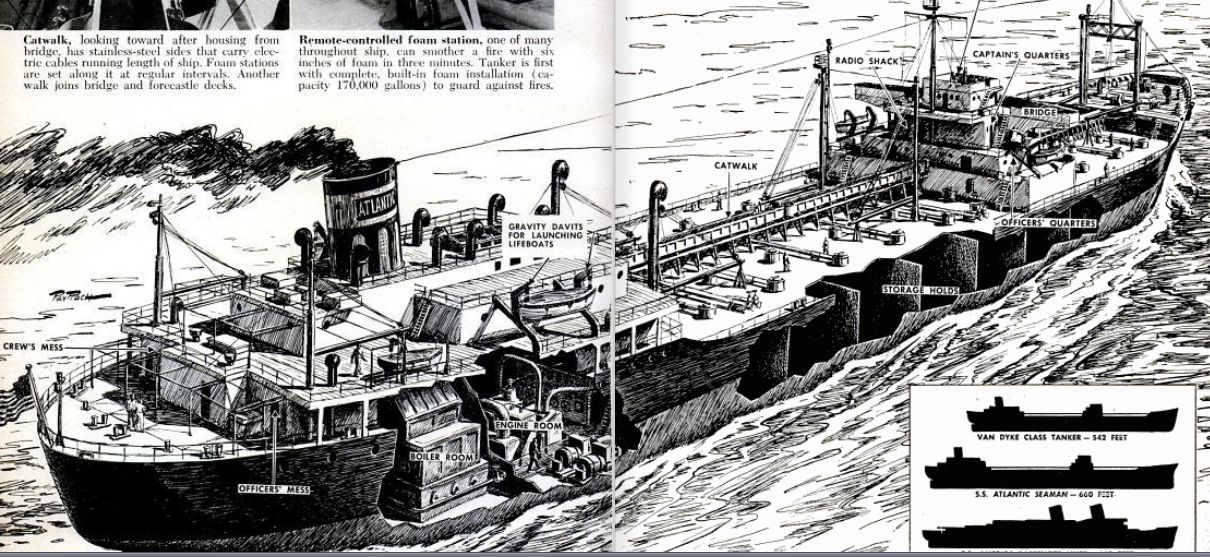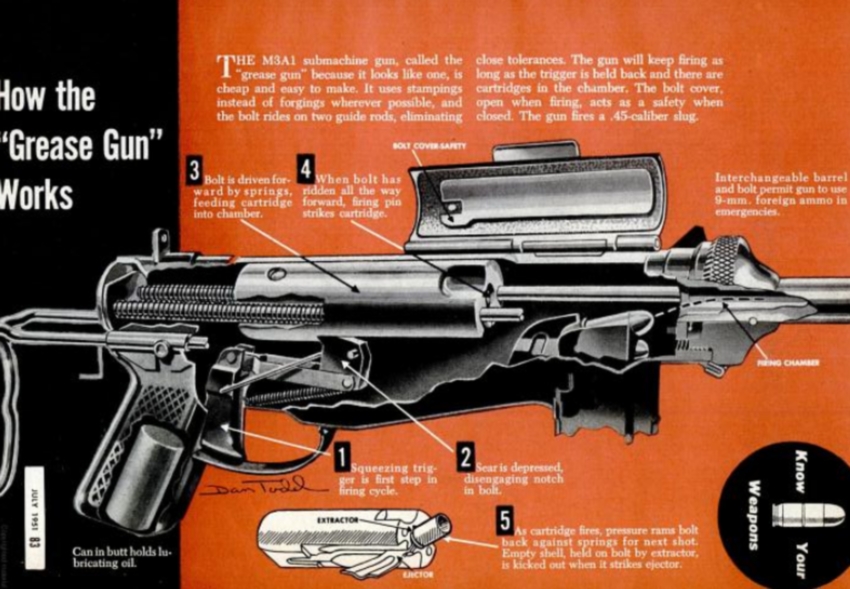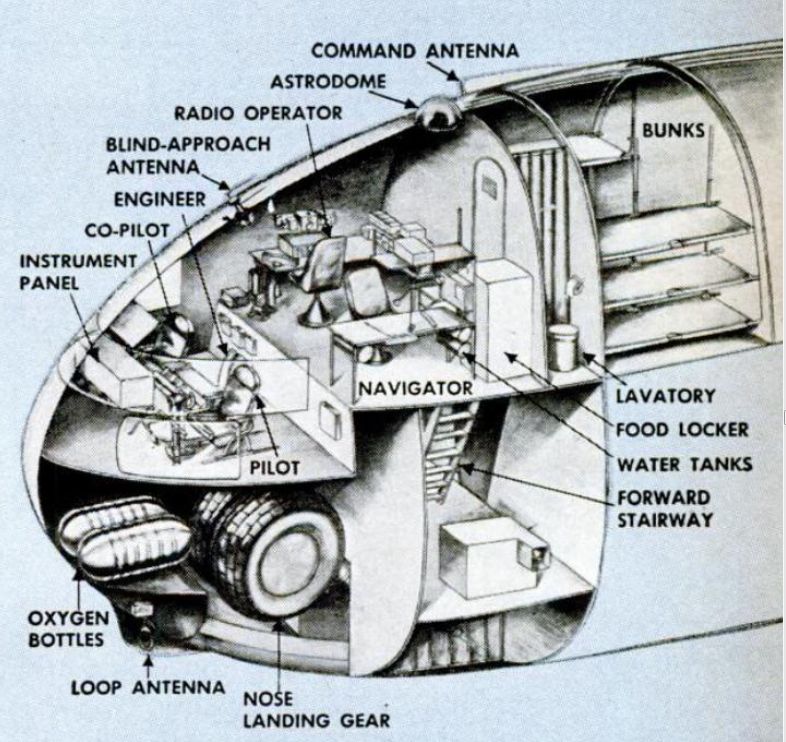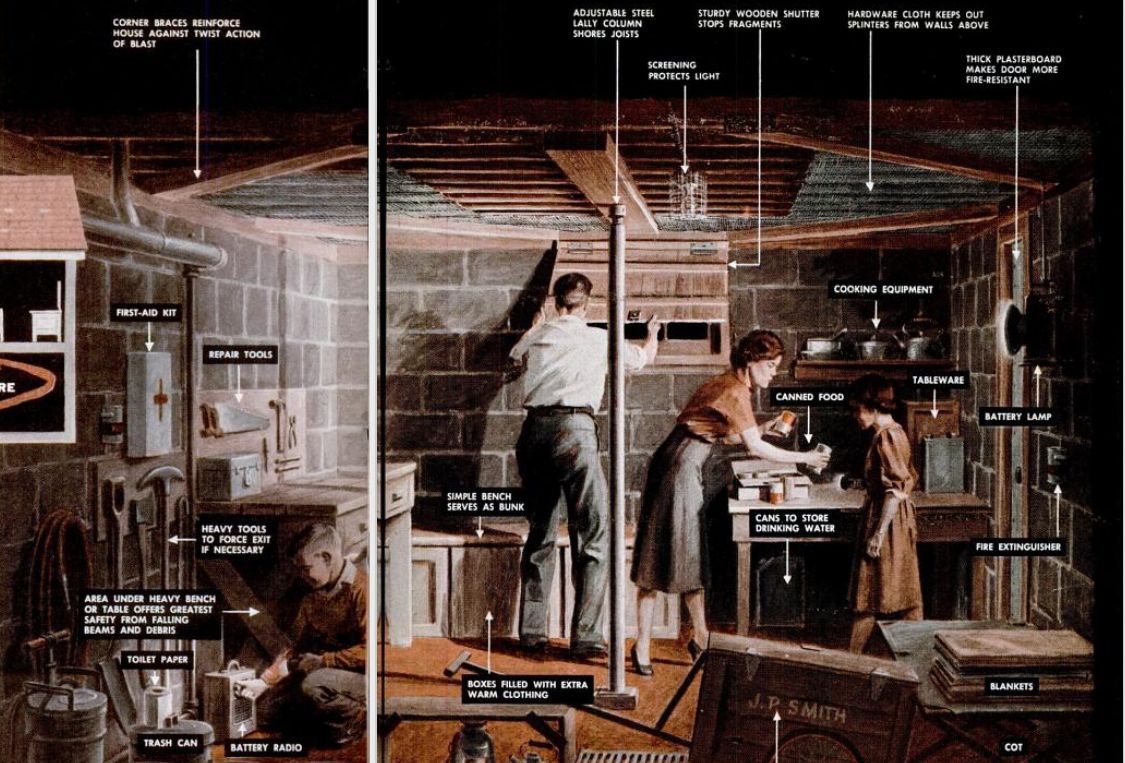In 1951, the term “supertanker” had not yet been invented. But with the United States’ growing appetite for oil post WWII, the need would soon arise for shipping massive quantities of crude overseas, at ever lower costs.
The S.S. Atlantic Seaman was considered a supertanker in its era, transporting 257,935 gallons of oil–enough to move 16,000 cars 10,000 miles each, as the text notes.
By way of comparison to today’s supertankers, of course, the S.S. Atlantic Seaman isn’t much. Some of today’s largest tankers can transport 2,000,000 barrels of oil.

Source: Popular Science July 1951








